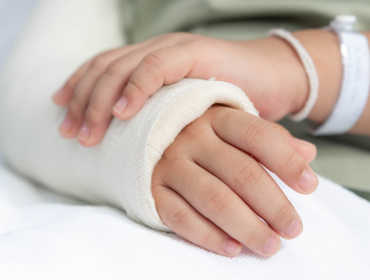A scaphoid fracture is one of the most common wrist fractures, typically occurring from a fall onto an outstretched hand or a direct blow to the wrist. In this article we will discuss how to manage scaphoid fractures in detail.
The scaphoid is a small, boat-shaped bone located on the thumb side of the wrist, and because of its location and blood supply, fractures can sometimes be difficult to diagnose and manage. Proper treatment is crucial to prevent complications such as nonunion (failure of the bone to heal) or arthritis.
Ways to Manage Scaphoid Fractures
- Non-Surgical Management
Most scaphoid fractures can be managed without surgery, especially if the fracture is stable and does not involve displacement (when the bone pieces are out of alignment).
The initial treatment often involves immobilizing the wrist in a cast or splint to allow the bone to heal.
The cast should cover the forearm, wrist, and thumb, and the patient will typically need to wear it for 6 to 12 weeks, depending on the fracture’s location and severity.
During this period, it’s important to avoid putting weight or strain on the wrist to prevent further damage. Follow-up appointments with the physician are necessary to monitor the healing process, and X-rays may be taken periodically to ensure the fracture is healing correctly.
- Surgical Intervention
Surgical treatment may be required in cases where the fracture is displaced, unstable, or located in the proximal (upper) part of the scaphoid, which has a poorer blood supply.
In these cases, if the fracture doesn’t heal properly with conservative treatment, surgery is recommended to restore the bone alignment and promote healing.
The most common surgical approach involves the use of screws or pins to stabilize the fracture and ensure that the bone fragments are held in place.
In some cases, a bone graft may be necessary if the fracture has caused significant bone loss. Surgery may also be recommended if there is a delay in diagnosis, which can increase the risk of complications like nonunion or avascular necrosis (death of bone tissue due to a lack of blood supply).
Rehabilitation and Recovery
After the cast or surgery, rehabilitation is essential to restore strength and mobility in the wrist. A physical therapist will guide the patient through exercises aimed at improving wrist flexibility, strength, and range of motion.
Rehabilitation may begin with gentle movements and gradually progress to more challenging exercises as healing continues.
Full recovery can take several months, and it’s crucial for patients to follow their healthcare provider’s recommendations to avoid re-injury. Once the wrist has regained full function, patients are usually able to return to their normal activities, including sports and manual work.
Initial Assessment and Diagnosis
A scaphoid fracture can be challenging to detect in the early stages because it might not show up on initial X-rays, especially if the bone is only partially fractured. However, if a patient experiences tenderness over the anatomical snuffbox (a depression on the thumb side of the wrist) or reports pain after a fall, a scaphoid fracture should be suspected.
A healthcare provider will conduct a thorough physical examination and may order imaging tests, such as X-rays, CT scans, or MRIs, to confirm the diagnosis. In some cases, the fracture might not appear on the first set of X-rays, and the patient may be advised to wear a cast for several weeks and return for follow-up imaging to check for any changes.
Complications to Watch For
Scaphoid fractures, if not treated properly, can lead to several complications:
- Nonunion: This occurs when the bone fails to heal properly. It is more common in fractures located in the proximal part of the scaphoid, as the blood supply to this area is limited.
- Avascular Necrosis: If the blood supply to the scaphoid is disrupted, the bone can begin to die, leading to long-term joint problems and chronic pain.
- Arthritis: Untreated or improperly treated scaphoid fractures can lead to early-onset arthritis in the wrist, causing pain and stiffness.
If a scaphoid fracture does not heal correctly or if symptoms persist after initial treatment, further interventions, including additional surgery or joint replacement, may be required.


